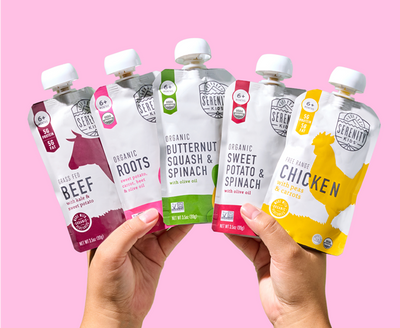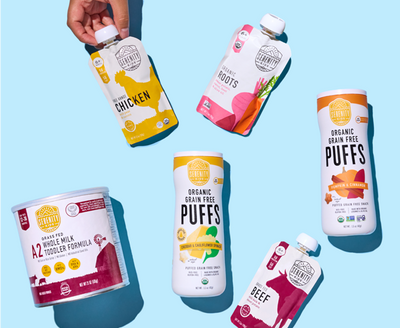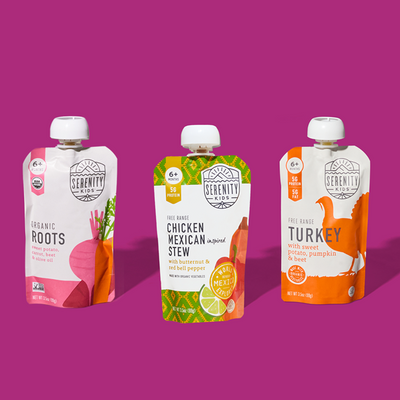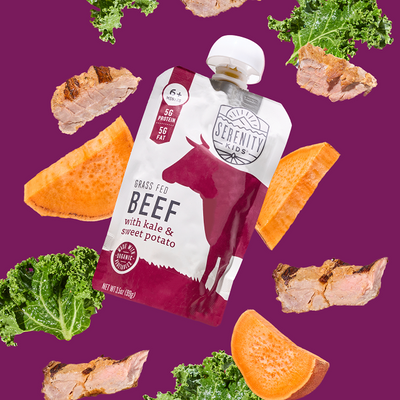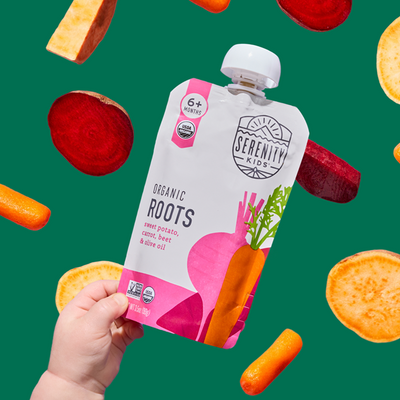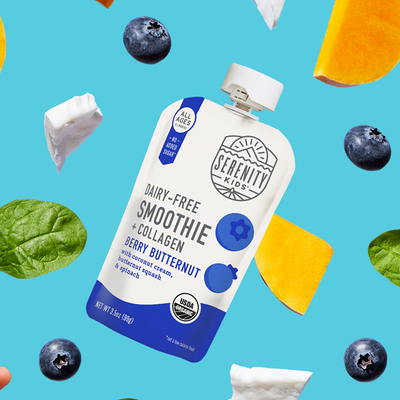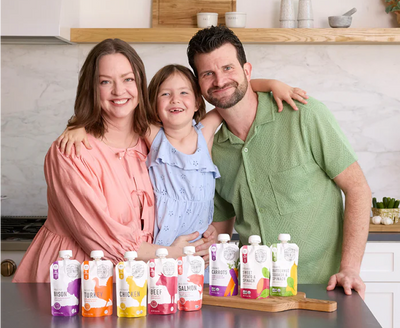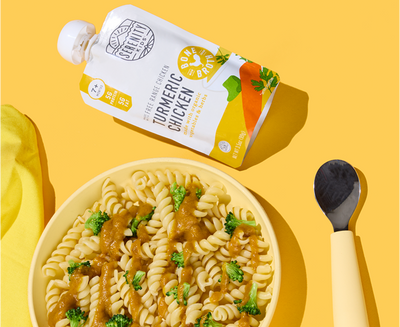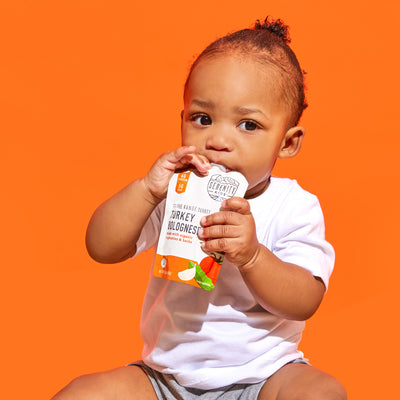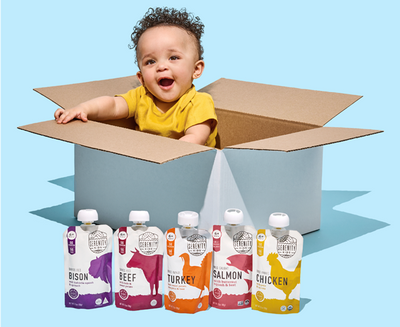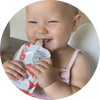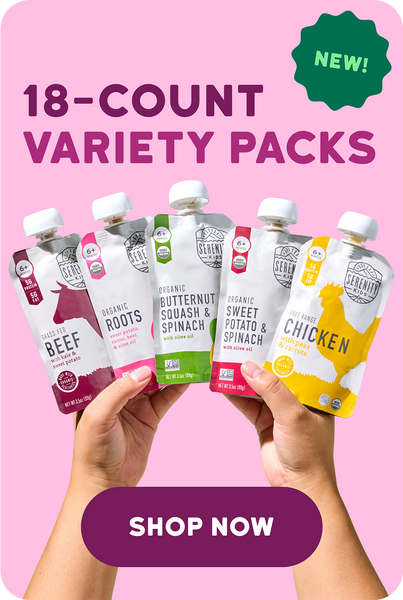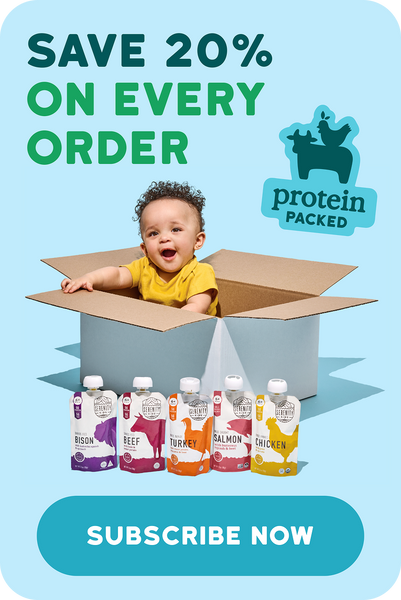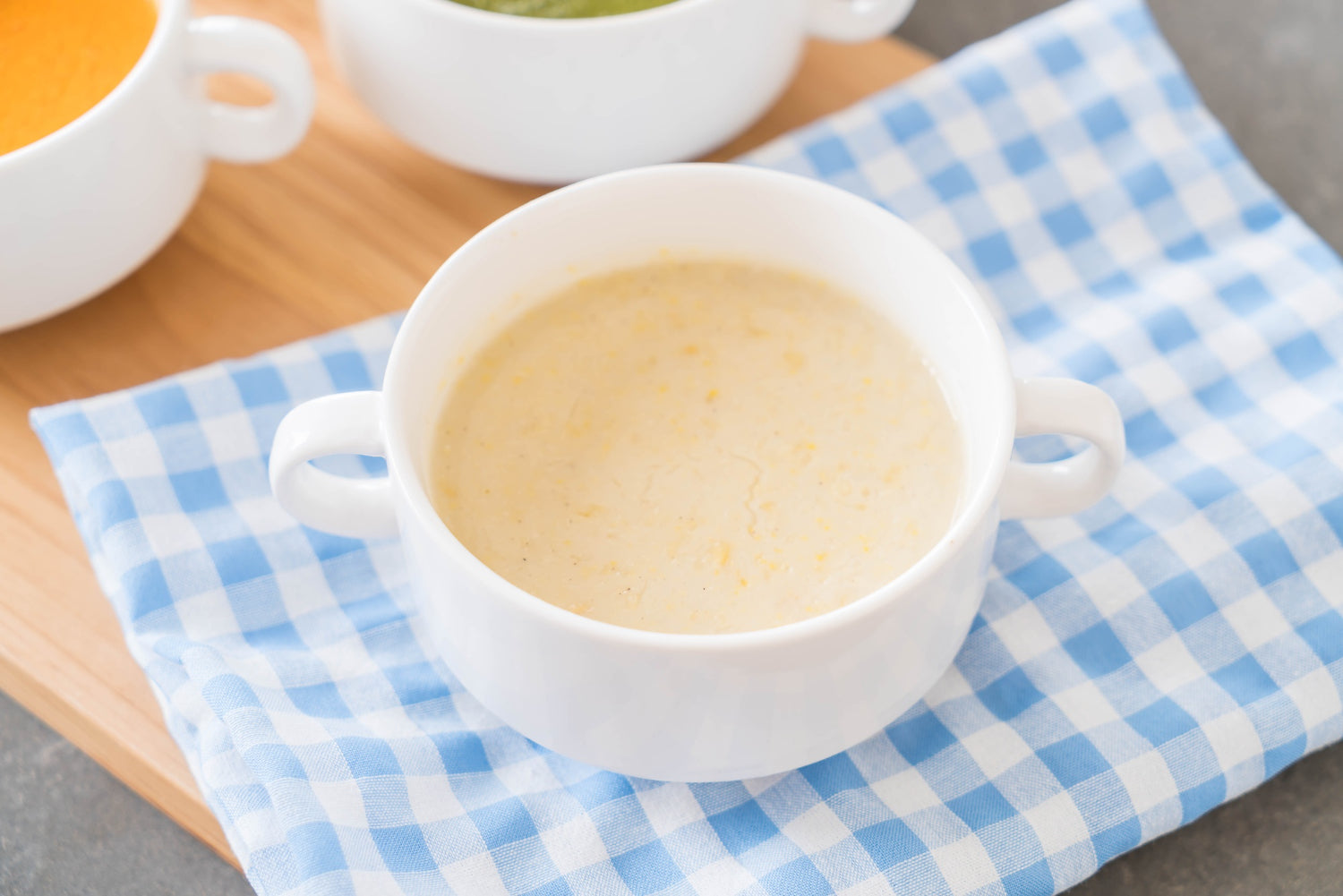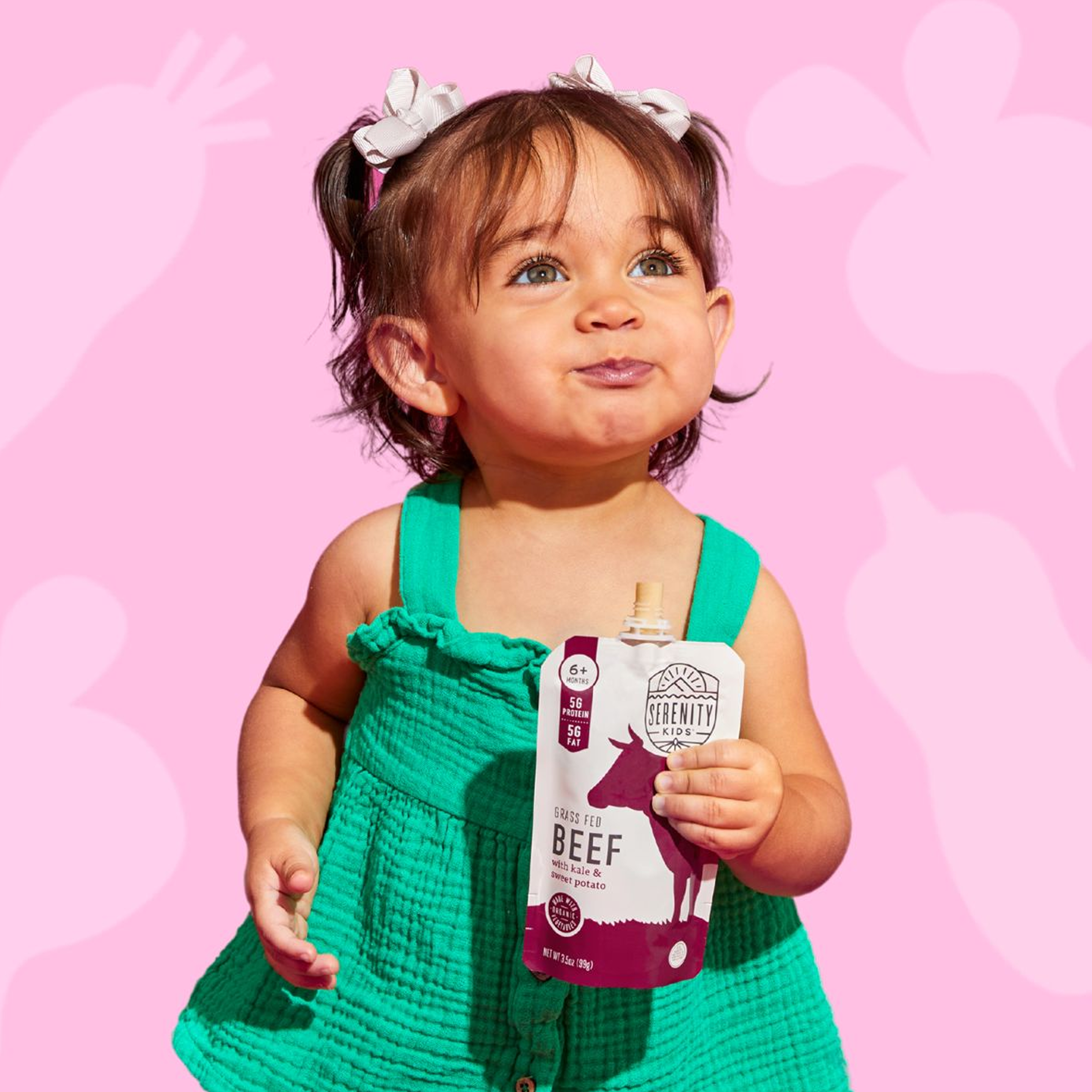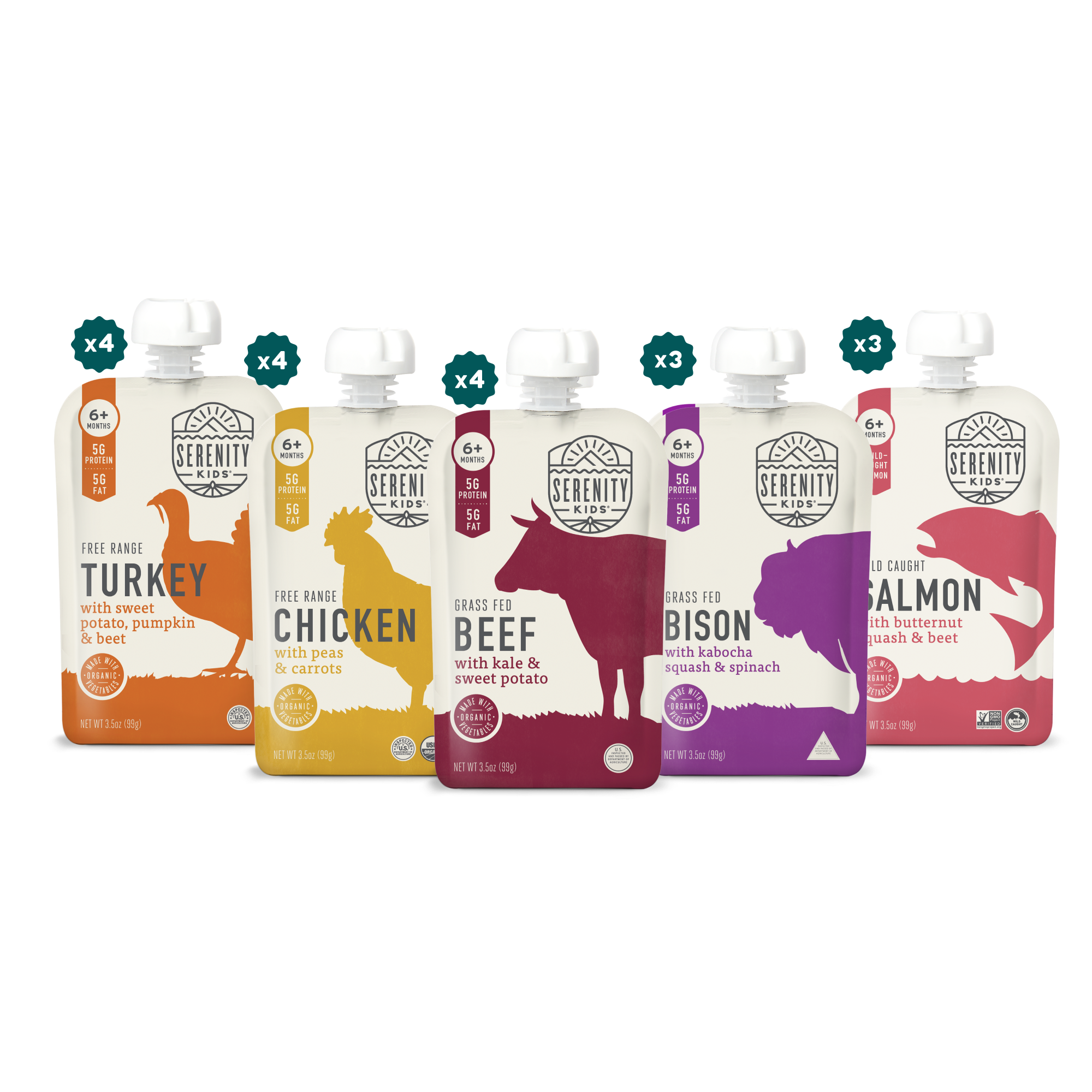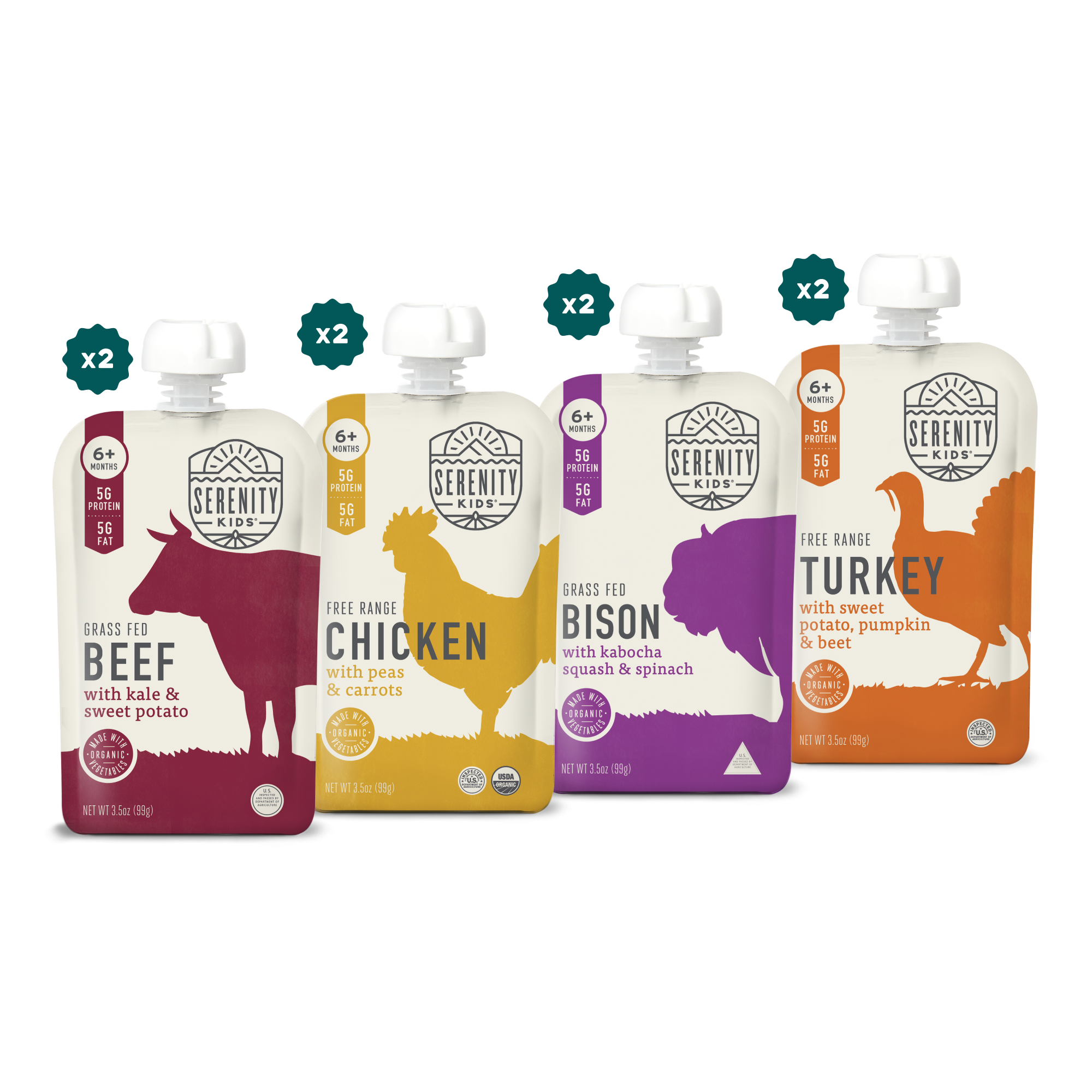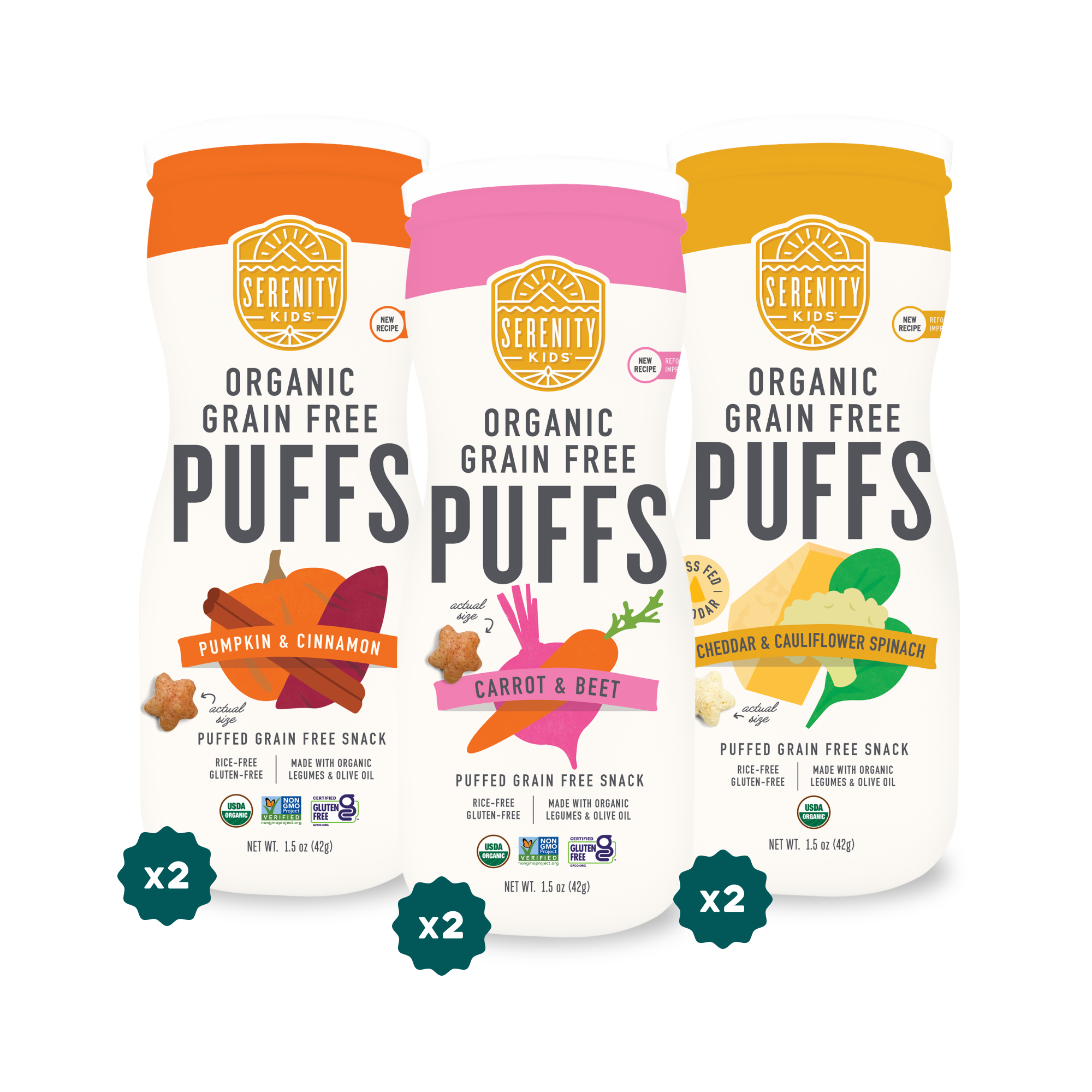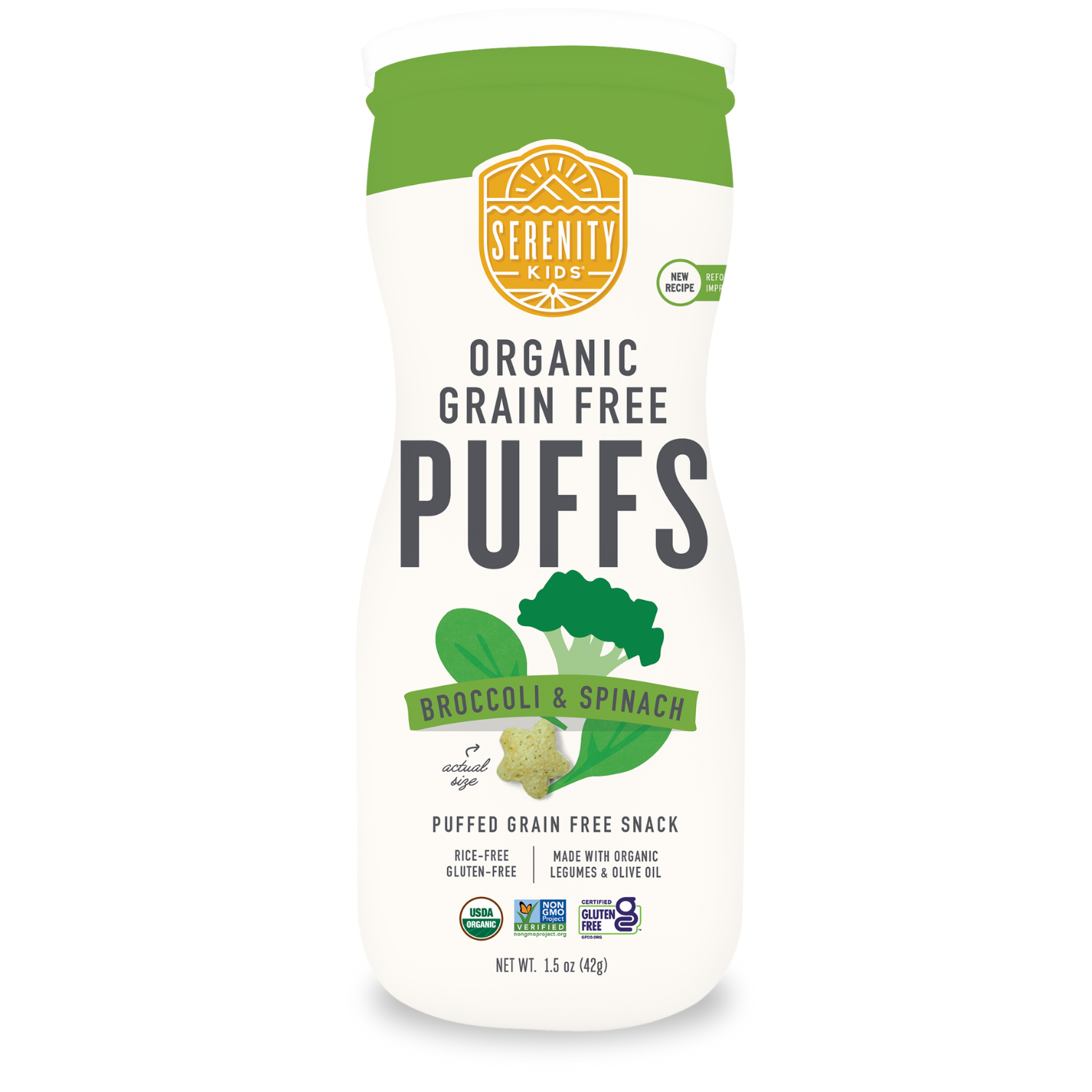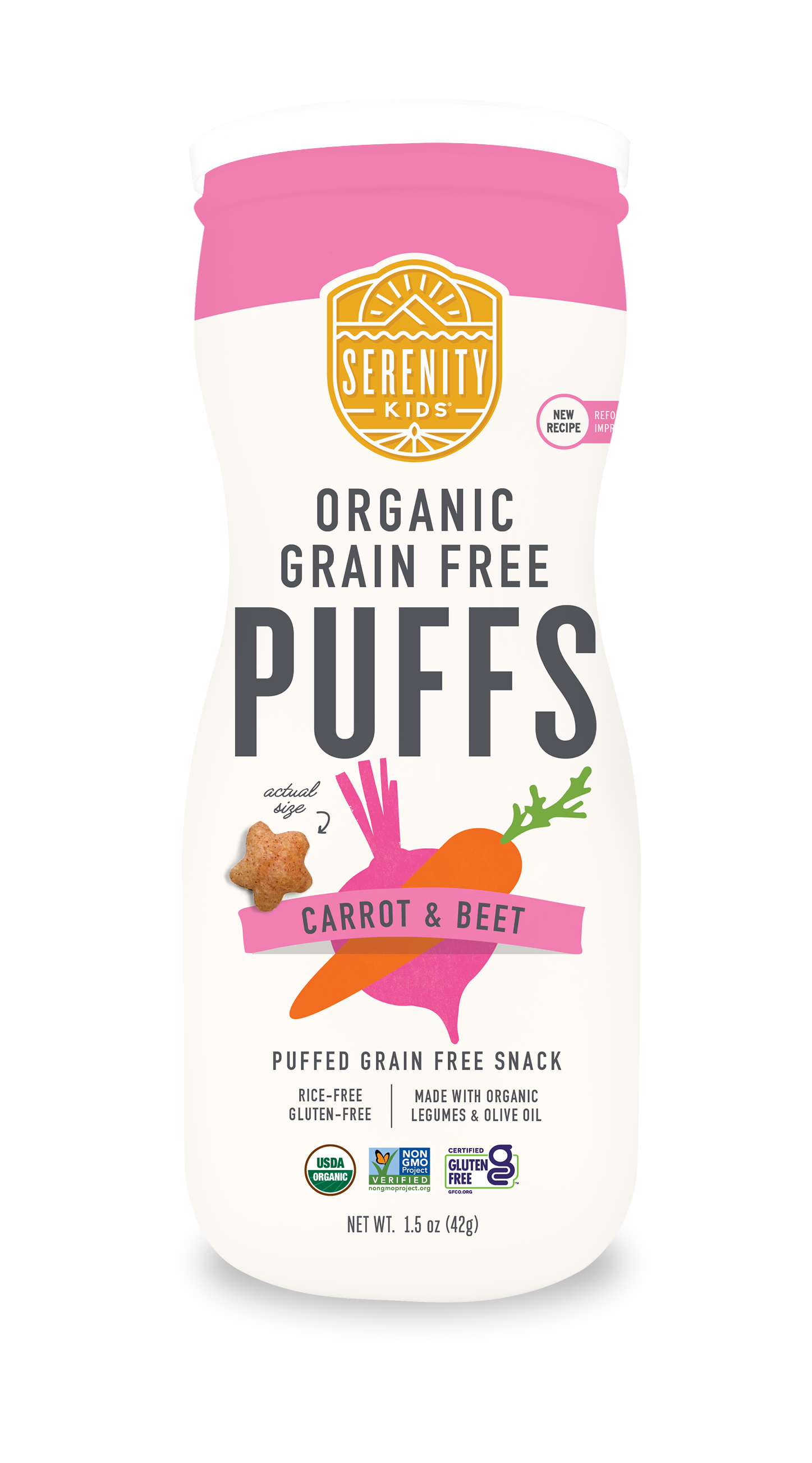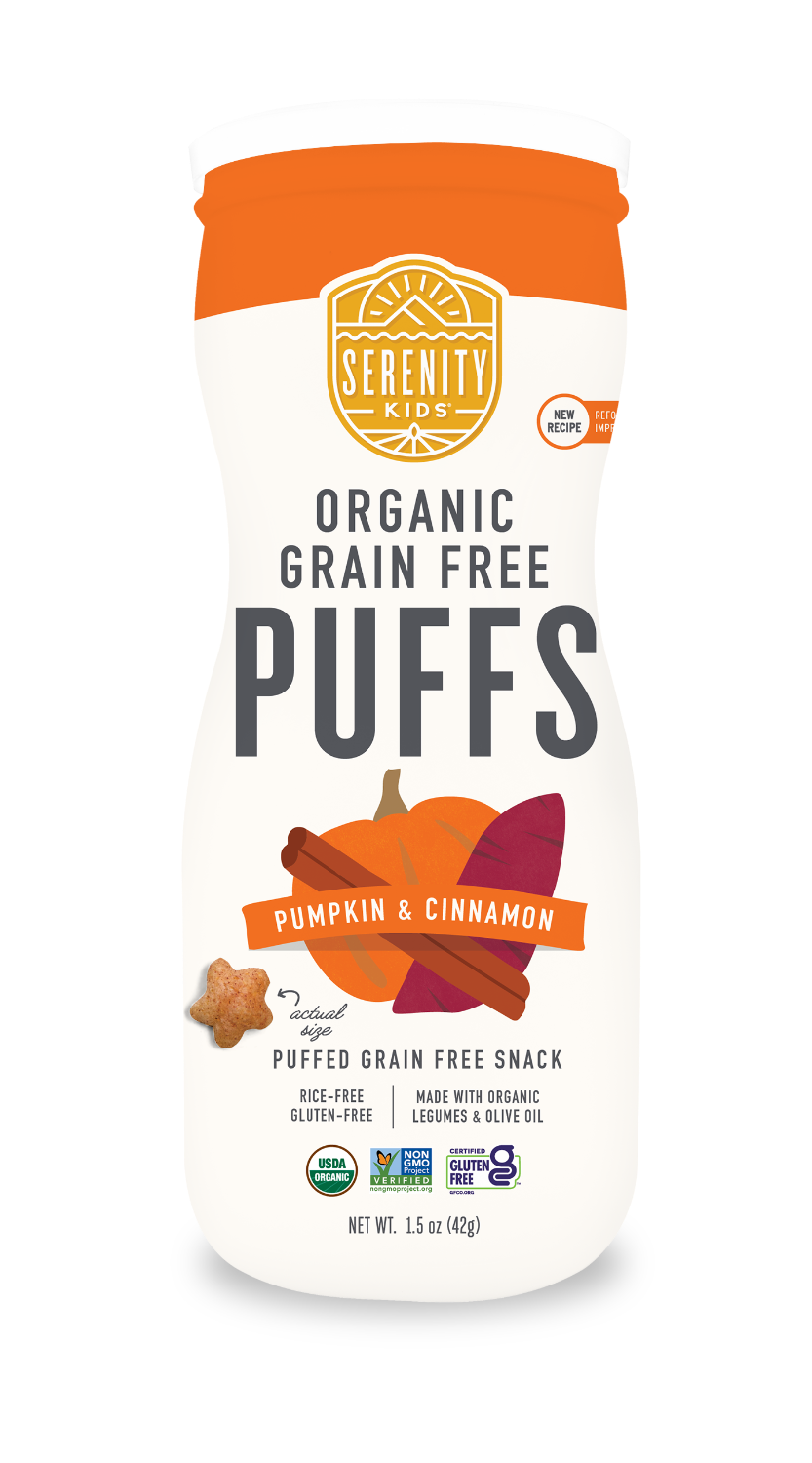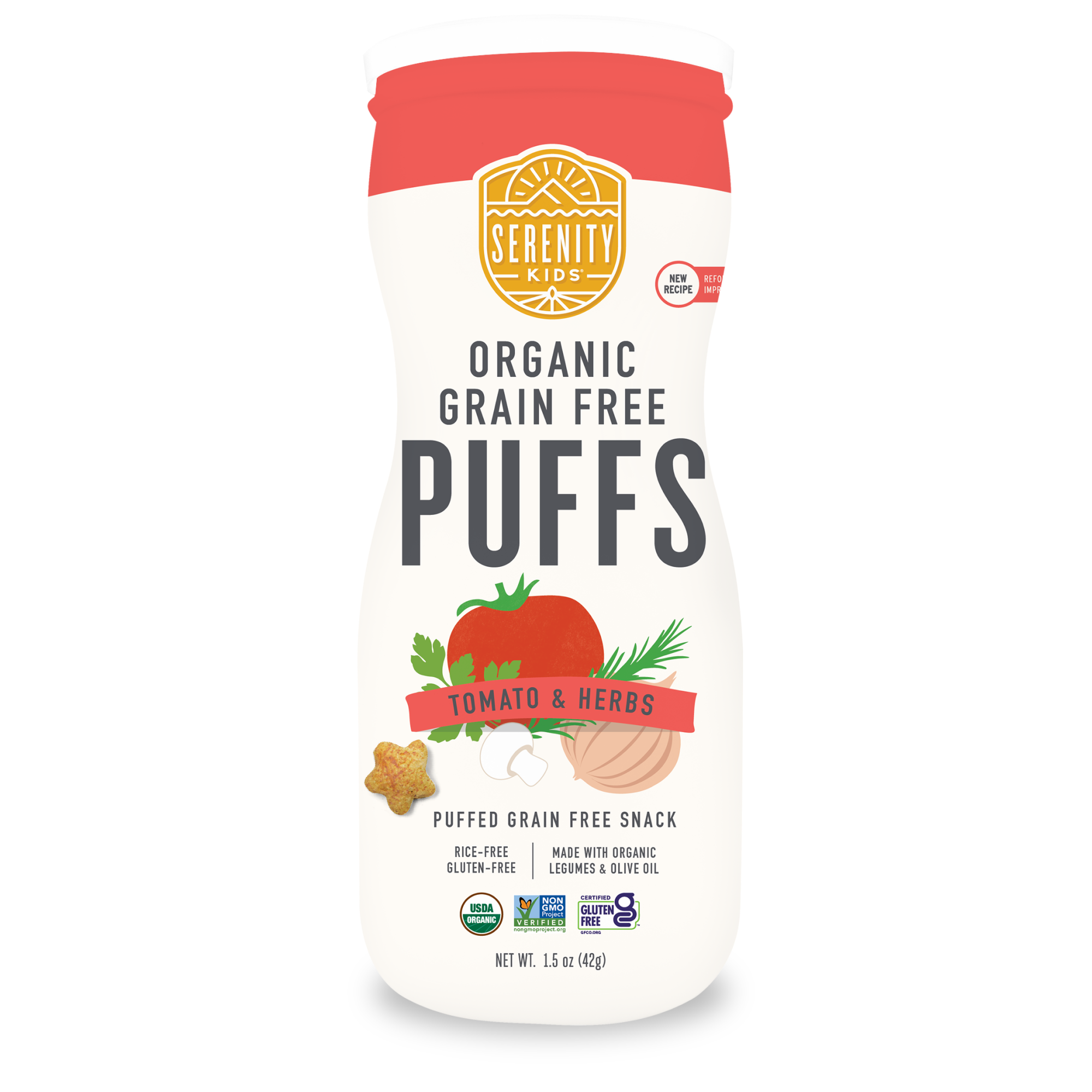Feeding your little one real, nourishing food is an exciting milestone. Introducing chicken to your baby's diet is a great way to support growth, development, and a love for savory flavors early on. In this guide, we’ll walk you through why chicken is such a smart first protein, how to prepare it safely, and some delicious homemade chicken baby food ideas to try. (And if life gets busy, our Serenity Kids baby food pouches make it easy to offer the same high-quality nutrition without the extra prep!)
Why Choose a Chicken Recipe for Baby Food?
Chicken is a fantastic first protein for babies just starting solids. It’s mild in flavor, packed with nutrients, and blends easily with fruits and vegetables for a smooth puree.
High-Quality Protein for Growing Bodies
Chicken provides complete protein to support muscle growth, tissue repair, and a healthy immune response. Both chicken breast (white meat) and chicken thighs (dark meat) offer important amino acids babies need once they begin eating solid foods. Including small portions of chicken in your baby's diet helps build strong, healthy bodies.
Packed with Essential Nutrients
Beyond protein, chicken is rich in iron, zinc, B vitamins (especially B6 and B12), and other key nutrients that babies require after 6 months. As breast milk alone may no longer meet iron needs after six months, introducing iron-rich foods like chicken is important for healthy development.
Easy to Blend and Pair with Other Foods
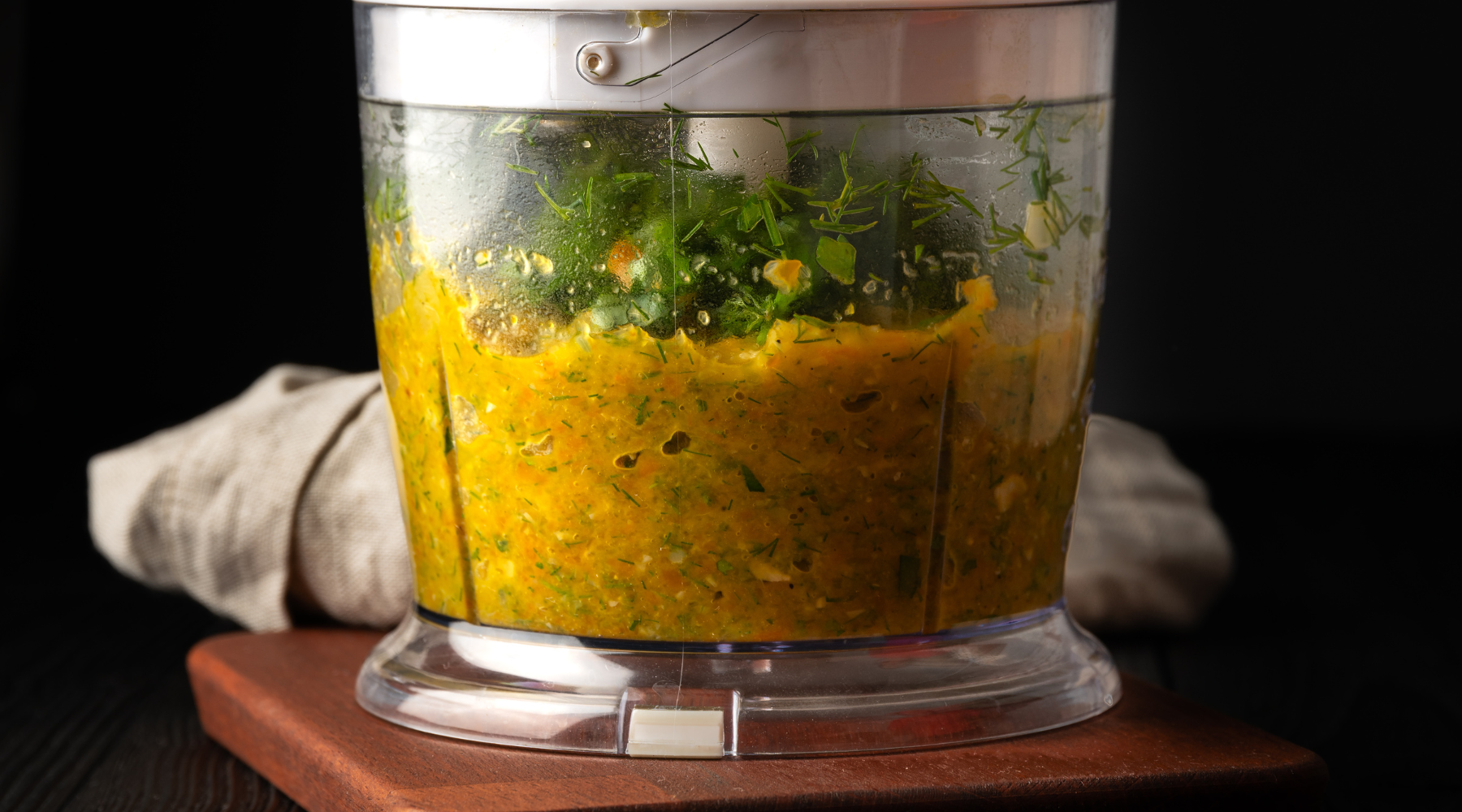
Chicken has a mild flavor that pairs beautifully with many veggies and fruits. Sweet potato puree, carrot puree, and even apple puree blend easily with pureed chicken. This versatility makes it simple to create balanced, delicious recipes that offer a variety of flavors and nutrients.
How to Puree Chicken for Baby
Making chicken puree baby food at home is simple once you know a few key cooking tips. Here's a straightforward guide to help you confidently prepare safe, delicious meals for your little one.
Choose the Right Cut of Chicken
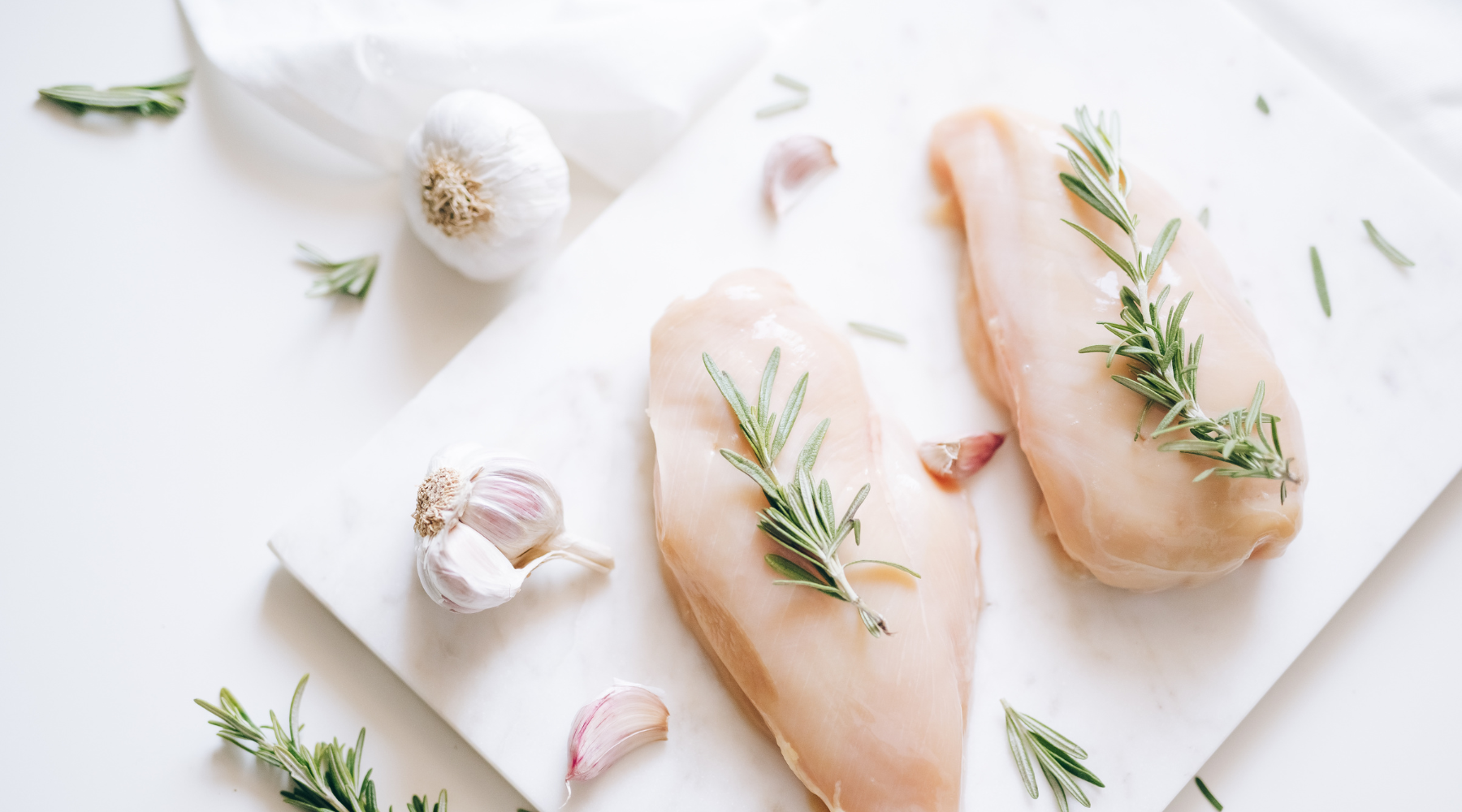
Since boneless, skinless chicken breasts are lean, they tend to be more dry. Chicken thighs are more moist and have a slightly richer texture. Both cuts work for making baby food, but we tend to prefer thighs for their flavor and texture.
Cook the Chicken Thoroughly

For homemade baby food, always fully cook chicken to an internal temperature of 165°F. Safe methods include boiling or steaming, either in a saucepan or instant pot, or roasting it in the oven.
Check Cooking Time and Doneness
Expect chicken to take about 15–20 minutes to boil, depending on thickness. You’ll know it’s fully cooked when there’s no longer pink, the juices run clear, and the meat easily shreds with a fork. A simple kitchen thermometer can be a good investment to put your mind at ease if you tend to feel anxious or uncertain.
Blend with Liquid for Smooth Texture
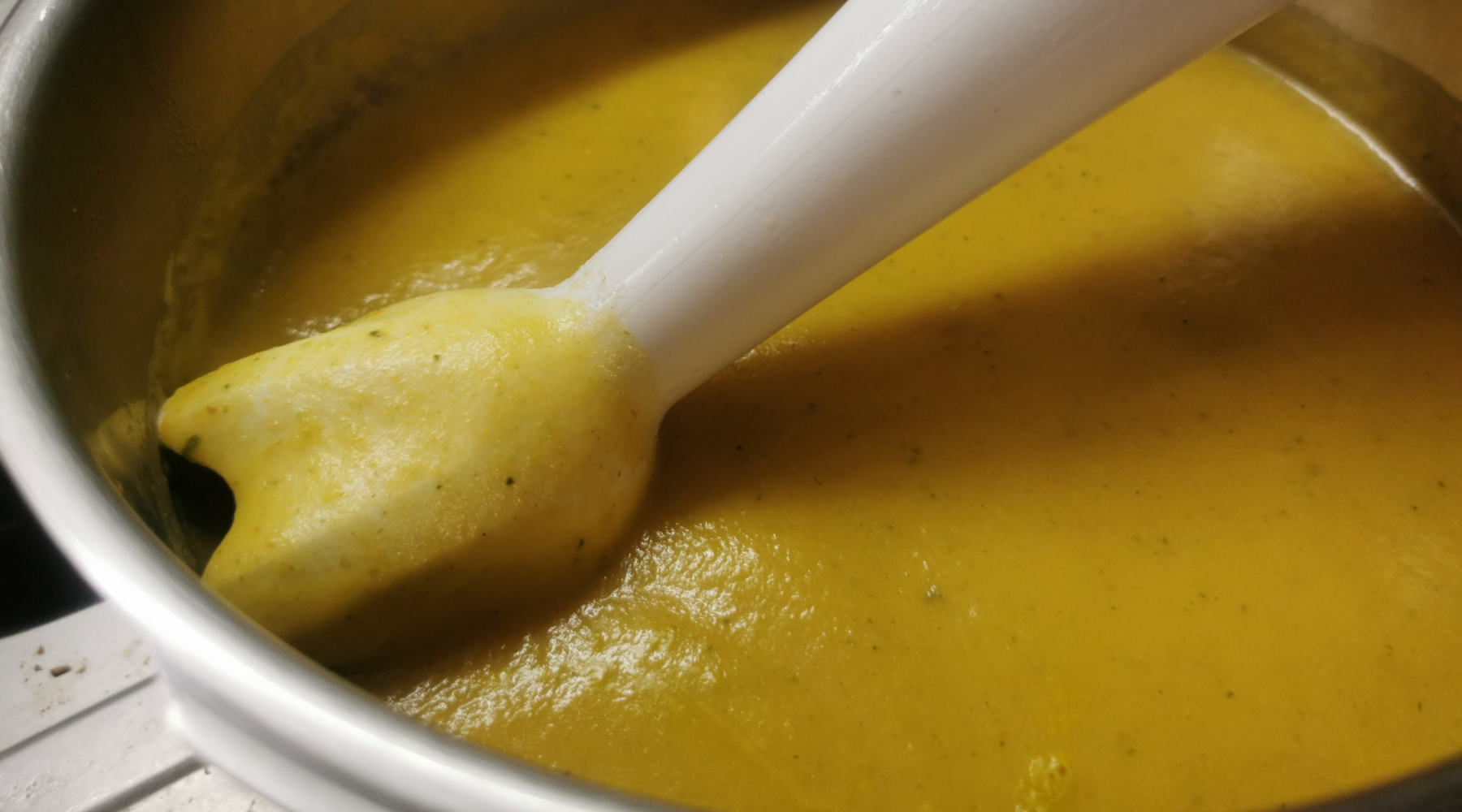
After cooking, use a blender or food processor to shred or puree the chicken. Add small amounts of breast milk, formula, bone broth, or water to achieve your desired consistency. Young babies may prefer a very smooth puree, while other babies may tolerate slightly thicker or chunkier textures.
Adjust the Consistency by Age
All babies are different, and may tolerate textures differently, but if you are just starting out, here are some general guidelines to start with. Progress at whatever pace feels right for your baby.
-
For babies 6–7 months: Aim for a smooth puree that flows easily off the spoon.
-
For babies 8–10 months: Make the puree thicker, allowing for tiny soft lumps.
-
For baby-led weaning meals: Offer shredded or finely chopped soft cooked chicken as a finger food.
Chicken Puree Recipe Ideas for Babies
Ready to cook? Here are a few healthy and delicious recipes featuring chicken for babies just starting their solids journey.
Basic Chicken Puree

A perfect first taste of protein!
Ingredients:
-
2 chicken thighs
-
Breast milk or bone broth for blending
Instructions:
-
Boil or steam the chicken until fully cooked (about 15–20 minutes).
-
Transfer cooked chicken to a blender or food processor.
-
Add liquid gradually and blend until smooth.
Want a ready-to-serve option? Try our Organic Chicken Baby Food Pouch!
Chicken + Sweet Potato Puree

A balanced blend of lean protein and creamy veggie goodness.
Ingredients:
-
1 boneless, skinless chicken breast
-
1 small sweet potato, peeled and cubed
-
Breast milk or bone broth for blending
Instructions:
-
Steam, roast, or boil sweet potato until fork tender.
-
Boil chicken separately until cooked through.
-
Blend both together, adding cooking liquid, bone broth, or breast milk to reach a smooth consistency.
Chicken + Apple + Carrot Puree

A lightly sweet, nutrient-dense combo to expand your baby’s palate.
Ingredients:
-
1 boneless, skinless chicken thigh
-
1 apple, peeled and cored
-
1 carrot, peeled
-
1 tbsp butter, ghee, or olive oil
-
Breast milk or bone broth for blending
Instructions:
-
Saute the apple and carrot together until soft.
-
Boil or steam chicken until fully cooked.
-
Blend all ingredients together until smooth, adding liquid as needed.
Want more ready-made options for busy days? Check out our Chicken, Beet and Thyme for Babies Pouch for a nutritious, flavor-packed blend, or our veggie-based Butternut Squash and Spinach Puree for babies.
Storage and Reheating Tips

Homemade chicken baby food is easy to store and serve safely:
-
Fridge: Store pureed chicken baby food in an airtight container in the fridge for up to 48 hours.
-
Freezer: Freeze in ice cube trays for small portions, then transfer frozen cubes to freezer storage bags. Use within 1–2 months for best flavor.
-
Reheating: Thaw in the fridge overnight or gently warm in a small saucepan over medium heat.
Frequently Asked Questions About Chicken Baby Food
When can I introduce chicken to my baby?
Most experts recommend introducing chicken once your baby is ready for solid foods, typically around 6 months of age. Always make sure the chicken is fully cooked and pureed to an age-appropriate consistency.
Can I use ground chicken to make chicken baby food?
Yes! Ground chicken is a convenient option. Just be sure to cook it thoroughly until no longer pink and then puree with a little chicken broth, breast milk, or water to achieve a smooth texture.
What’s the best way to add flavor to chicken baby food?
Simple is best for babies starting solids. You can add natural flavor by pairing chicken with sweet potato, carrot, apple, or other vegetables for babies. Bone broth, breast milk, and spices and herbs (cinnamon, ginger, and oregano are favorites) can also add flavor.
How long does homemade chicken puree last in the fridge and freezer?
Store homemade chicken baby food in an airtight container in the fridge for up to 48 hours. For longer storage, freeze the puree in small portions (ice cube trays work well) and use within 1–2 months for the best quality.
Is it safe to offer shredded chicken to babies?
Yes, once your baby shows readiness for finger foods (usually around 8–9 months), you can offer small, soft pieces of shredded chicken. Always ensure the chicken is fully cooked and easy to gum or chew.
Wrap-Up: Nourishing Your Baby One Puree at a Time
Introducing your baby to solid foods is a special milestone, and making homemade chicken baby food is a wonderful way to support healthy growth with real, nutrient-dense foods. From simple purees to creative blends, you’re helping your little one build a strong foundation for lifelong healthy eating habits.
And when time is tight or you need a convenient option you can trust, our Organic Chicken Baby Food Pouch and Chicken + Thyme for Babies Pouch are made with the same commitment to quality and nutrition — no grains, fillers, or added sugars.
Whether you’re cooking at home or reaching for Serenity Kids’ carefully crafted baby food, every bite you serve supports your baby’s development, energy, and joy in discovering delicious new flavors.

